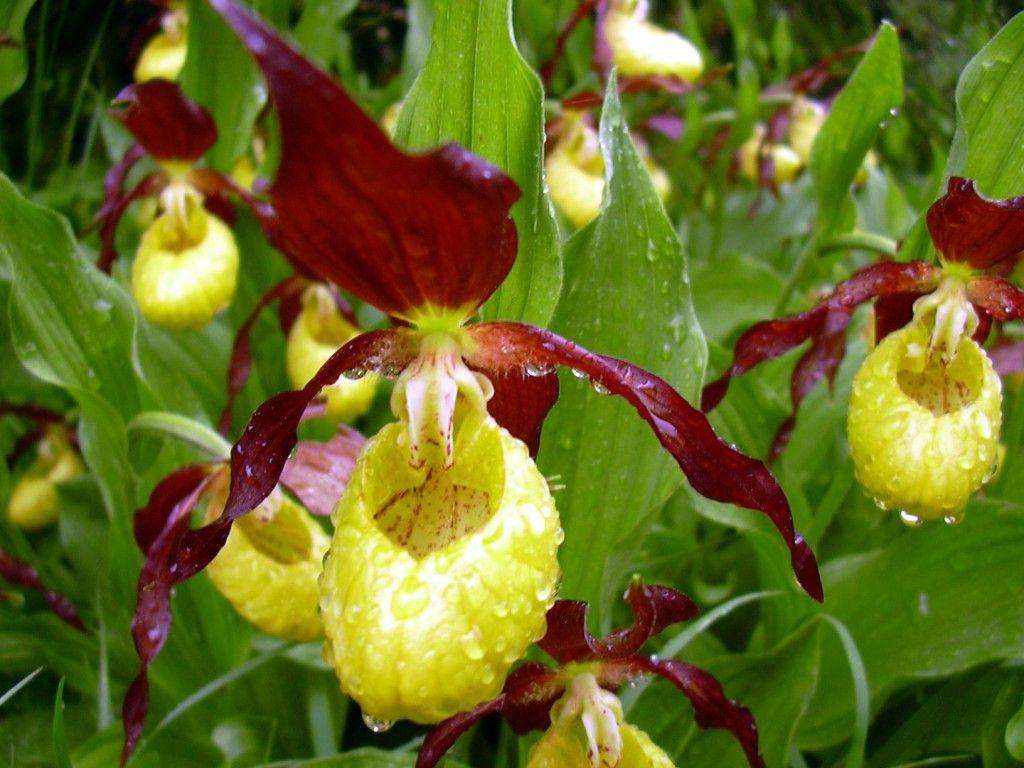Oh, Virginia - this wildflower is a treasure.
We have various native wildflowers, whether in our alpine regions or in the valleys and plains, which we share with our Alpine neighbours, like several species of gentians, the famous "edelweiss", earleaf bellflower, auricula, the monk's-hood, etc.
I will, therefore, present one of the most endangered, though widespread Eurasian flowers from the temperate zones, an orchid, also known as lady's slipper orchid, i.e., Cypripedium calceolus, which is also of the order "asparagales" (like the camas lily):

https://en.wikipedia.org/wiki/Cypripedium_calceolus
Add:
And T(h)ink might remind us of a little particularity about the consumption of the baked bulbs of the camas lily - lol. (I looked into the info; it is from the same order as various wild and cultivated plants, including asparagus, hyacinths, lilies, etc.
https://en.wikipedia.org/wiki/Camassia

